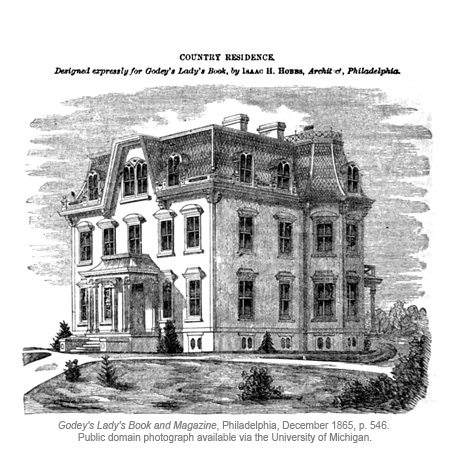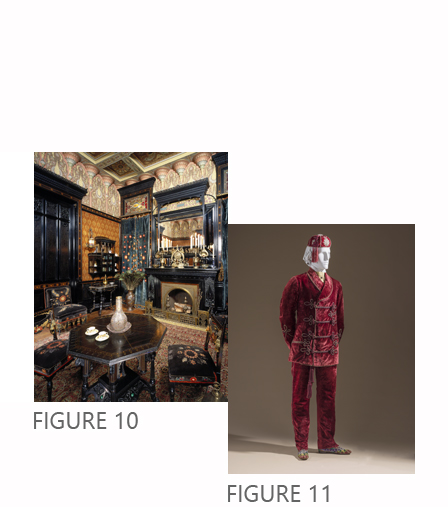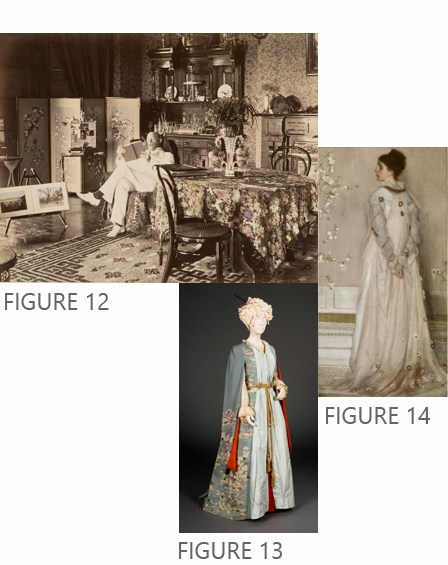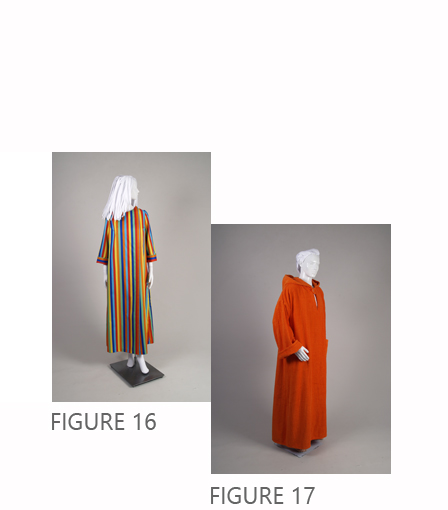Architecture and the Body
Clothing is the body’s near environment and serves a variety of functions including protection, decoration, modesty, and status.1 As people’s sartorial needs change, certain functions become more important than others. Advances in indoor heating have allowed innerwear to shift away from protection and take on a more decorative purpose. Interior design and fashion are intrinsically linked.
Throughout history, dress meant to be worn in the home has mirrored its surroundings.2 As private spaces shifted with new architectural trends, so did the garments within them. Victorian Orientalism led to plush smoking rooms and elaborate smoking suits (Figures 10 & 11). A love for all things Japanese and Chinese changed the aesthetics of parlours (Figure 12) where ladies wore fanciful dressing gowns that could be made of kimono fabrics (Figure 13). Open space living with minimalist colour palettes and furnishings are echoed in today’s fashions and the growing disinterest for privacy. Innerwear allows people to become decorative objects within their homes (Figure 14). Examining clothing artifacts provides a snapshot of a time period and reflects the influence of aesthetic movements on dress.
Architecture, interior design, and fashion are interrelated and can speak of their times. Nestled in elaborate and spacious rooms (Figure 15), garments may offer information that goes beyond colors, shapes, and patterns. Social mores may affect how much or how little coverage a bathrobe affords (Figure 16). The orange robe challenged the gender norms of dress in the 1970s (Figure 17) as it diverged from the traditional style cherished by Hugh Hefner.
1 Phyllis Tortora and Sara Marcketti, Survey of Historic Costume, 6th ed. (New York: Bloomsbury, 2015), 2.
2 Jessica Jean Carlson, “Building About the Body: Architecture as Dress” (master’s thesis, Montana State University, 2011), 75. https://scholarworks.montana.edu/xmlui/bitstream/handle/1/1042/CarlsonJ1211.pdf?sequence=1&isAllowed=y.
Curators
Anne Bissonnette, PhD, Bronwyn Bates, Rhonda Buie, Emma Carr, Juli Grombacher, Frances Heaton, Danielle Klatchuk, Evelyn Leung, Diana Leyva Luciano, Ariane Mendoza, Thomas Osterling, Nicole Morozewich, Emma Ross, and Chloe Schell.







